Not too many families had a nuclear bomb dropped in their backyard, and survived. The Gregg family of Mars Bluff, South Carolina, was one of them.
On March 11, 1958, a group of four U.S. Air Force Boeing B-47E-LM took off from Hunter Air Force Base in Savannah, Georgia. They were heading to England to take part in a mission called Operation Snow Flurry, where they would perform mock bomb drops. This was a time when the Cold War was in full swing, and Air Force bombers, such as the ones taking part in Operation Snow Flurry, were issued a MK 6 nuclear bomb each that were to be carried onboard in case the planes needed to activate during an emergency wartime situation.

Photo credit: DTMedia2/Wikimedia
The nuclear weapons were secured in place by a locking pin that could be inserted and removed either manually or by a pneumatically powered catch. By regulation, however, the locking pin was to be out for landing and takeoff and reinserted only at 5,000 feet.
Earlier that day, during pre-flight check the loading crew ran into some trouble while trying to set the locking pin and had to use a hammer to complete the pin engagement. The men then hurriedly completed their pre-flight checklist. They had to be finished by 10:30 AM or points would be docked for the mission. During their haste, they failed to run through the pin engage/disengage cycle.
Before taking off the copilot Captain Charles Woodruff disengaged the locking pin from the nuclear weapon, as the regulation required, and took off to join three other B-47s for a formation flight to Europe. When the B-47 reached an altitude of 5,000 feet, the co-pilot reached down and operated the lever to re-insert the pin. The re-insertion failed and a warning light lit up to notify them of the problem. Woodruff continued to work on the locking lever unsuccessfully for five minutes as the B-47 climbed to 15,000 feet. At this point, the pilot summoned the bombardier, Captain Kulka, to go into the bomb bay to try to seat the locking pin by hand.
Kulka wasn’t sure where the locking pin was, and to complicate matters the space where the bomb was stored was so narrow that Kulka couldn’t even wear a parachute. He spent some time looking for the pin at the bottom of the bomb before deciding that the pin must be on the top. With the intention of pulling himself up, Kulka felt blindly for a hand support but accidentally grabbed the bomb’s emergency release mechanism.

Photo credit: Air Mobility Command
The 7,600 pound bomb dropped from its shackles onto the bomb bay doors. The doors unable to keep the weight flung open, sending the bomb 15,000 feet down to the ground below. Kulka almost fell along with the bomb, but he managed to save himself by grabbing on to something and pulled himself back.
Fortunately, the bomb's fission core was stored in a separate part of the plane, so the bomb was unarmed. Although not nuclear, the bomb still had substantial payload of traditional explosives that functioned as its triggering mechanism.
The bomb hit on the property of Walter “Bill” Greg, and immediately exploded obliterating a playhouse he had built for his daughters. Luckily, the three girls were not in the playhouse at that time but 200 feet away. They escaped with minor injuries from the explosion, as did Walter, his wife and son. The explosion created a crater 50 feet across and 35 feet deep, and damaged several buildings, and leveled nearby pine trees. The only casualties were a few chickens.
Walter Greg later sold the property and the plot of land where the crater was located passed through several owners, but none bothered to fill in the hole. The crater is still present today, although overgrown by vegetation. On the accident’s 50th anniversary, a state historical marker was erected by the highway. Near the crater is a plywood cutout of the bomb and an interpretive story board displaying copies of local newspaper stories from 1958.
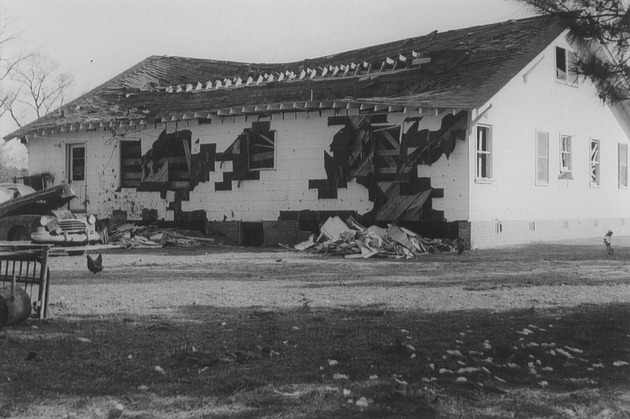
The back of Walter Gregg’s home which faced the point of impact. Photo credit: Florence County Museum

Walter Gregg’s shed, the structure that was closest to the point of impact. Photo credit: Florence County Museum
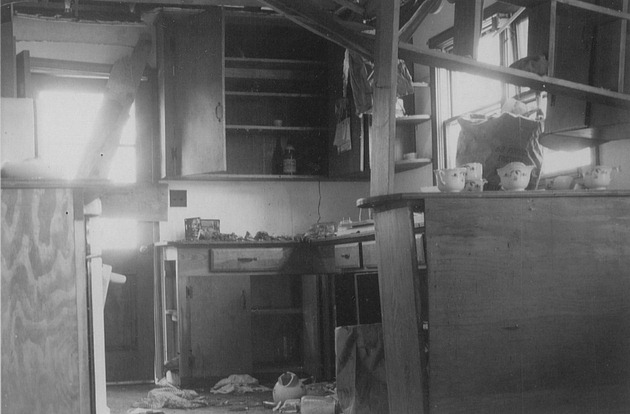
The kitchen of Walter Gregg’s home after the blast. Photo credit: Florence County Museum

One of Walter Gregg’s destroyed cars. Photo credit: Florence County Museum

The crater today. Photo credit: SCSwampFox/Panoramio
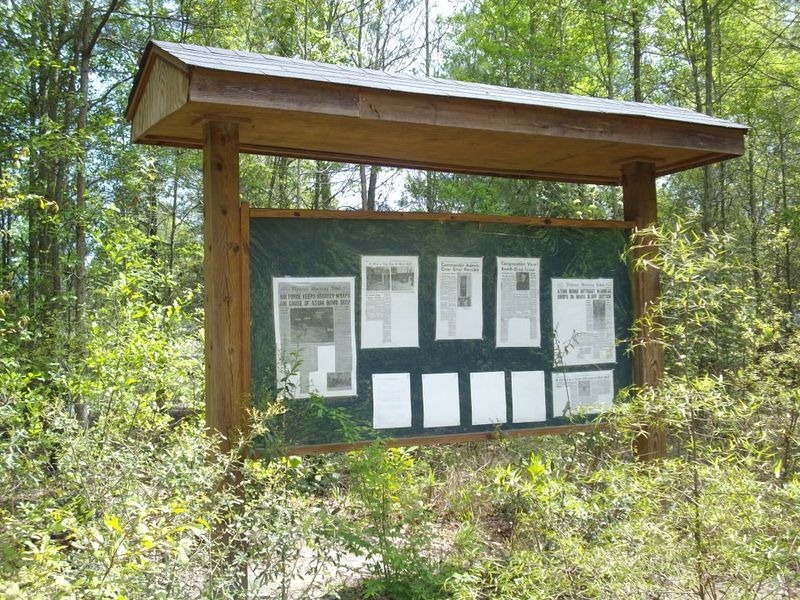
The storyboard near the crater. Photo credit: tboverse.us
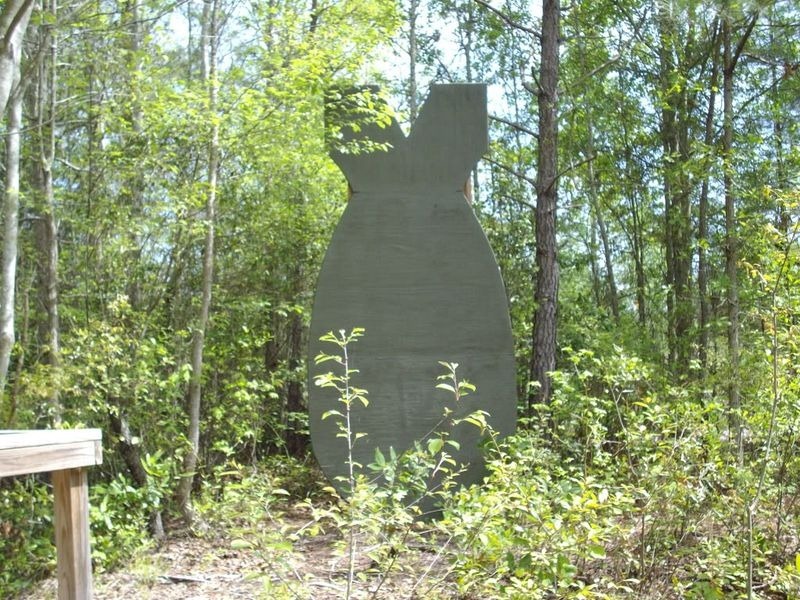
The life-sized plywood cutout of the bomb. Photo credit: tboverse.us
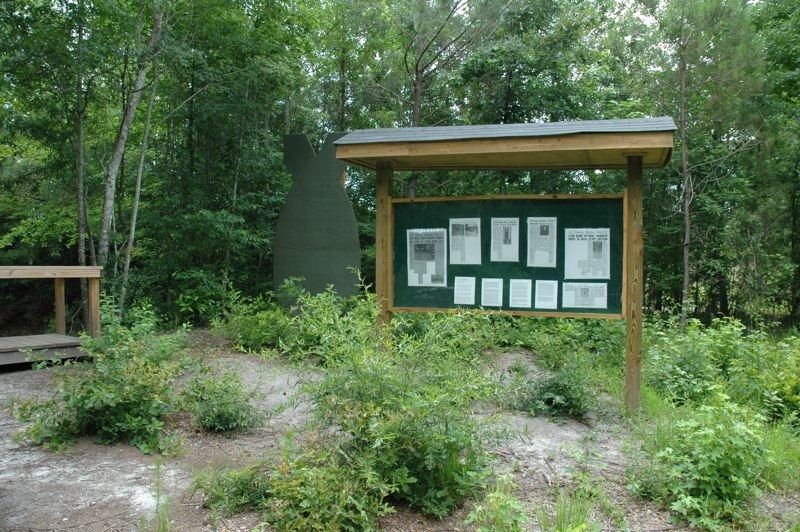
Photo credit: dtmp/Panoramio

Photo credit: dtmp/Panoramio

Fragments of the bomb is kept in a museum in Florence, South Carolina. Photo credit: Kelly Michals/Flickr
Sources: American Heritage Magazine / Roadside America / Wikipedia / Geocaching



Comments
Post a Comment